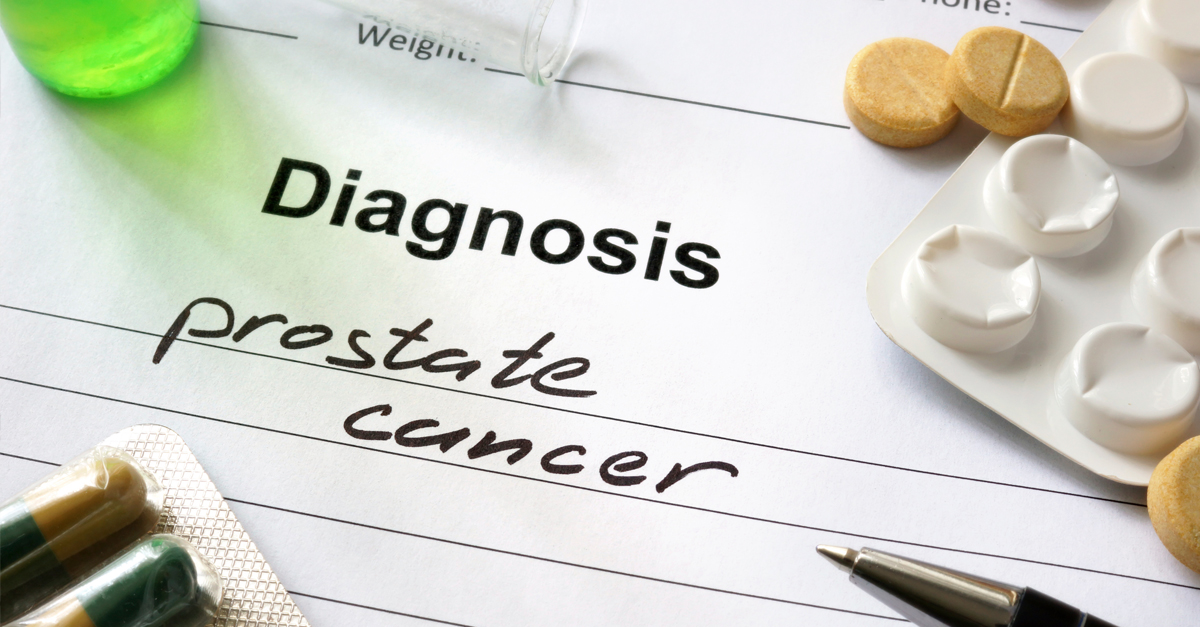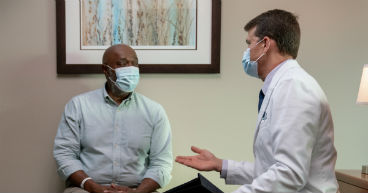
One in eight men will be diagnosed with prostate cancer during his lifetime, making it the second leading cancer type in men behind skin cancer. Because the walnut-sized prostate gland is part of the male reproductive system, sexual function is commonly impacted during or after prostate cancer treatment, and that prospect is a source great anguish for many patients.
Even so, very few men voice their concerns to their care team, says Traci Owen, RN, Sexual Health Nurse at Cancer Treatment Centers of America® (CTCA), Phoenix and CTCA Atlanta. “So much of their maleness is attached to their function and performance, so it’s really intimidating for men to have those conversations,” she says.
It’s important for prostate cancer patients and survivors to know there may be several options available to help them preserve or regain sexual function during and after treatment.
Treatment options for prostate cancer may include:
Factors relevant to each patient, such as his age and overall health, pre-existing conditions and stage of cancer, may dictate treatment options. Some patients whose cancer has not advanced and is slow growing may delay treatment and opt instead for active surveillance, when the cancer is monitored for progress over time.
Preparing for surgery
A prostatectomy—surgically removing the prostate—may impact a patient’s sexual function, so it’s important for men who undergo this surgery to begin doing Kegel exercises about a week before surgery, Owen says.
Kegels are exercises that have you contract, then relax the muscles of the pelvic floor. It’s like tightening the muscles in your lower abdomen when you feel the urge to go to the bathroom but have to “hold it.” Since the prostate sits below the bladder, Kegel exercises help manage post-surgery urinary incontinence, one of the primary goals immediately following a prostatectomy. Once a patient has regained urinary control, erectile function may be addressed.
Treating ED
Daily erectile dysfunction (ED) medications, such as sildenafil (Viagra®) or tadafil (Cialis®), dilate blood vessels, increasing blood flow to the penis. Owen notes that dosages of these medications may be increased as needed, until the desired response is achieved.
For men who experienced erectile dysfunction prior to surgery, a penile pump may be an option for getting or maintaining an erection. Four to six weeks after prostate cancer surgery, the patient may begin daily exercises with the pump to get the blood flowing to the penis and to stretch the tissue. Since the device is a recognized treatment for ED, many insurance companies cover all, or at least part, of the expense.
“As the erection begins to return, it’s not going to be sufficient for intercourse,” Owen cautions. That will take some time. If the cancer invaded the neurovascular bundle—nerves and blood vessels that wrap around the underside of the prostate gland—or the area very close to it and those vessels cannot be spared during surgery, the patient will not be able to get an erection naturally, Owen says, urging men to be patient when that happens. Patients should know from the outset that regaining pre-surgery sexual function may take up to 18 months.
If, after several months, the patient has not responded to escalating doses of an ED drug and/or penile pump, the urologist may suggest penile injections. “As soon as I say that, men’s eyes roll back in their head,” Owen says. “Penile injections are a great way for men who can’t take oral meds maybe due to a heart condition. The percentage of men who respond to the injections is in the 90 percent range, even if they didn’t respond to medications.”
During that procedure, a tiny, insulin-sized needle is injected into the side of the penis, which has far fewer nerve endings than the top or the base. “Men say they feel the pinch of a needle, but that’s it,” Owen explains. “Within five to 10 minutes of stimulation, they get a firm erection.”
Finally, if nerve damage in the area of the prostate is too extensive or if other interventions are unsuccessful, a urologist may recommend a penile implant, which inserts rods into the bed of the penis. The corpora cavernosa—spongy tissue that fills with blood to cause an erection—is removed, and a pump is implanted in the lower abdomen, allowing the patient to pump the implant device, filling the tubes with fluid to get an erection.
“Men will often times have sensation and have an orgasm,” according to Owen.
Making adjustments
If an erection isn’t possible, Owen says that if the patient’s nerves are intact, he can learn how to have a flaccid orgasm. “You can still have the experience with stimulation without having an erection,” she says. “Couples can have a shared experience, albeit in a different way.”
It’s important, she says, to let go of societal norms of sexuality and embrace the body “exactly where it is.” Even without an erection, Owen says, a man can still experience great pleasure with his partner.
“Instead of focusing on what they can’t do, I help give them a vision of what they can do,” she says. “Men are so conditioned to believe that the only way to please their partner is through intercourse, but the majority of women get sexual pleasure not from the vagina, but the clitoris, which has 8,000 nerve endings, while the vagina has way fewer. Sex isn’t over; it just may look different. There are erogenous zones all over the body.”
Learn how women may rebuild intimacy after breast cancer.


